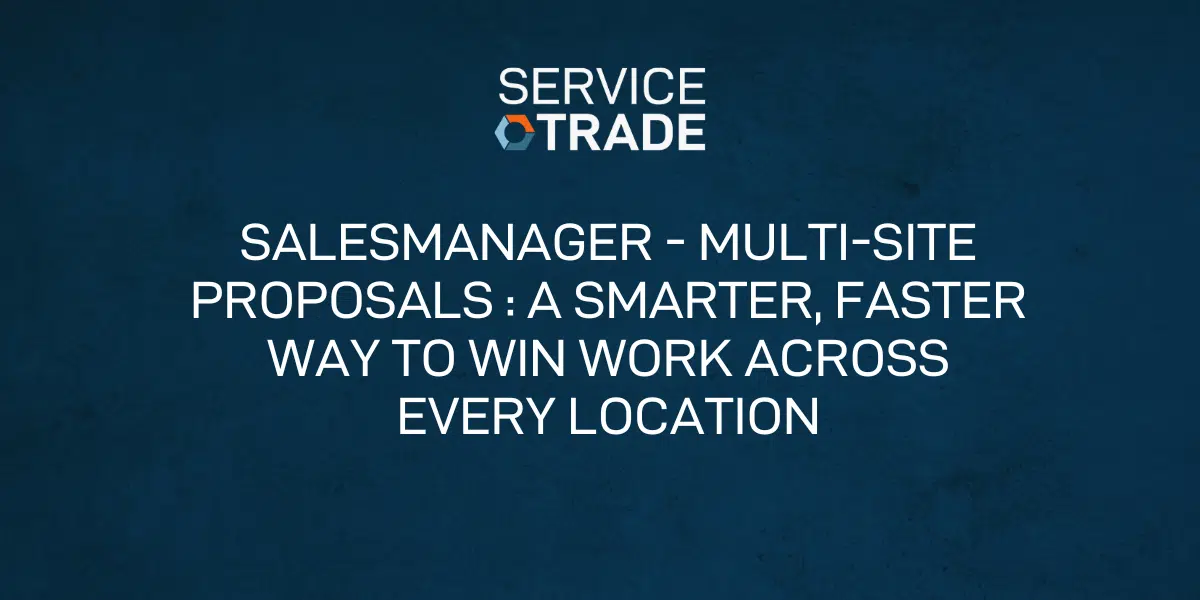
7 AI Myths Service Contractors Need to Stop Believing
If you’ve ever watched a Roomba spend 20 minutes trying to escape from under a chair and thought, “This is the tech that’s supposed to be smarter than humans?”—you’re not alone. Or maybe you saw the viral story where AI suggested using glue to keep cheese on pizza (yes, really), and figured the whole thing must be overhyped.
That skepticism is healthy. But it can also hold you back. Because AI isn’t a buzzword anymore. It’s here. It’s working. And it’s changing the game for the fire and life safety industry.
Let’s bust some myths.
Myth #1: AI Is Just Another Tech Bubble
Sure, we’ve seen tech hype before. Dot com. Crypto. NFTs. All had wild speculation, big promises, and eventual crash landings.
So it’s fair to ask: Is AI just another hype cycle waiting to pop?
The answer: No. Because while those other “revolutions” were mostly narrative-driven growth and speculation, AI is delivering measurable, real-world results. It’s not pets.com burning through $300M for a sock puppet ad. AI is solving actual problems.
Let’s look at the numbers:
- 72% of organizations are already using AI (up from 50% last year)
- 85% of executives see AI as a competitive edge
- 92% of large companies are seeing ROI, with an average return of $3.50 for every $1 spent
- 45% report doubling employee productivity with AI
That’s not speculation. That’s impact.
And AI isn’t new. It’s been quietly evolving for decades. We’re talking about a timeline that started with Turing tests in the 1950s, deep learning in the ‘60s, and IBM’s Watson winning Jeopardy in 2011. The buzz may feel new, but the foundation is decades old.
Myth #2: AI Is Too Hard to Use
I get it. AI lingo can sound like alphabet soup—GPT, LLM, fine-tuning, chain-of-thought reasoning… You could be forgiven for thinking you need a PhD to make sense of it.
But here’s the secret: you don’t have to understand how AI works to use it effectively.
Do you know what HTTP stands for? Or how TCP/IP works? Me neither—and I’ve worked in IT for 20 years. But that doesn’t stop us from using email or browsing the web every day.
AI is following the same curve web development did:
- First it was code-heavy (you had to write everything from scratch)
- Then it went low-code (WordPress-style templates)
- Now we’ve hit no-code (drag-and-drop simplicity with tools like Wix or Shopify)
That’s exactly where AI is headed. ChatGPT, Perplexity, and Google’s NotebookLM are your no-code entry points. You can talk to them like a coworker and get answers, ideas, and content instantly.
Myth #3: AI Is Too Expensive
With all the talk of billion-dollar data centers and $40,000 AI chips, it’s easy to assume this stuff is out of reach.
But the truth is: AI can cost you nothing at all.
The free version of ChatGPT gives you access to one of the world’s most powerful AI models. You can:
- Ask questions
- Analyze data
- Upload documents
- Search the web
- Create images
- Even build a custom chatbot trained on your own data
All for free.
When you’re ready to level up? It’s $20/month. That’s it. You don’t need to invest in trillion-dollar infrastructure to get started.
And tools like Perplexity.ai and Google’s NotebookLM are also free or extremely affordable. So before you worry about cost, just try one.
Myth #4: AI Will Steal My Data
Now we’re getting personal.
As someone who works in an industry where customer trust is everything, I understand the concern. Nobody wants their private business info training some faraway AI model.
Yes, there have been issues. Early AI companies scraped data, watched videos, and probably pulled some stuff they shouldn’t have. But here’s the deal:
You control what data you give AI.
For general brainstorming, idea generation, or content help—free tools are fine. But for sensitive info (like salaries, customer details, or proprietary data), you have options:
- Upgrade to paid plans that give you better privacy guarantees
- Use local AI tools like LM Studio, where data never leaves your computer
Think of AI like email or cloud storage: You don’t stop using it because of security risks—you just create smart policies around how it’s used.
Myth #5: AI Can’t Be Trusted
Let’s be clear: AI will make mistakes.
In fact, ChatGPT gives a wrong or misleading answer about 15–20% of the time. I once had a chatbot tell me it didn’t know the answer—but was “very confident” about that fact. 🤷
So yeah, don’t hand over critical decisions to AI unsupervised.
But that doesn’t mean you can’t trust it. You just have to trust but verify.
Let AI:
- Sort through large documents
- Identify patterns in your data
- Draft reports, proposals, or emails
Then let a human review and approve before sending anything critical. AI is like a super-smart junior colleague—helpful, fast, tireless—but not quite ready to run the place.
Myth #6: AI Will Take My Job
Let’s talk real.
Yes, AI is going to change jobs. But history shows us that automation usually doesn’t eliminate jobs—it just changes them.
Think of ATMs. People thought they’d eliminate tellers. Instead, banks opened more branches, tellers did more relationship-building, and the job evolved.
Same with spreadsheets and accountants. Same with calculators and mathematicians.
The same is happening in fire and life safety. AI doesn’t replace skilled techs—it replaces the repetitive stuff:
- Scheduling
- Documentation
- Generating reports
- Filtering customer calls
It frees up time so your people can do what they’re best at: real inspections, customer relationships, and problem-solving in the field.
Oh, and that whole idea that AI will replace your job?
It won’t.
But someone using AI just might.
Myth #7: AI Is for Other People, Not Me
Here’s the one I love busting the most.
So many people can see how AI helps other jobs: customer service, marketing, accounting. But they think their job is too specialized. Too hands-on. Too unique.
If you’ve got tedious, time-consuming tasks (TTTs), AI can help. The problem is, you’ve done those tasks so many times, your brain doesn’t even register them anymore. But they’re eating up hours of your day.
Ask yourself:
- What’s one task I could do with YouTube playing in the background?
- What do I do every week that’s boring, repetitive, or low-value?
Now ask ChatGPT:
“How can I use AI to make this faster or easier?”
Boom. You’re off and running.
Just Start
AI can sound overwhelming. I get it.
But you don’t have to dive into the deep end. You just have to start swimming.
Pick one task. Try one tool. Ask one question.
You don’t need to be an expert to get value out of AI. You just need to start experimenting. That’s how I got here—one base hit at a time. Now AI tools have made me at least 10x more efficient in multiple areas of my work.
And that’s why I believe the future of AI in fire and life safety isn’t about replacing people.
It’s about amplifying them.
So go forth. Bust myths. Kill tedious tasks. And if you’re ever stuck, just remember: AI may not get tired of your BS—but it still needs a great human driving the ship.
Let’s get to work.

STOP TYPING. Start Scanning. Technicians have always done whatever it takes to get the job done, but manual asset entry has never been the part they enjoy. Between faded serial plates, tiny lettering, and tight schedules, capturing equipment details by hand slowed everyone down. And when the data wasn’t complete or accurate, the office was […]
You’ve invested in software. You’ve digitized processes. You’ve built dashboards. Yet somehow, your team still asks, “Whose numbers are right?” You’re not alone. Many commercial service contractors invest heavily in data tools only to see minimal ROI. The problem usually isn’t the technology—it’s one of these five critical failures. Failure #1: Skipping Stages The mistake: […]
